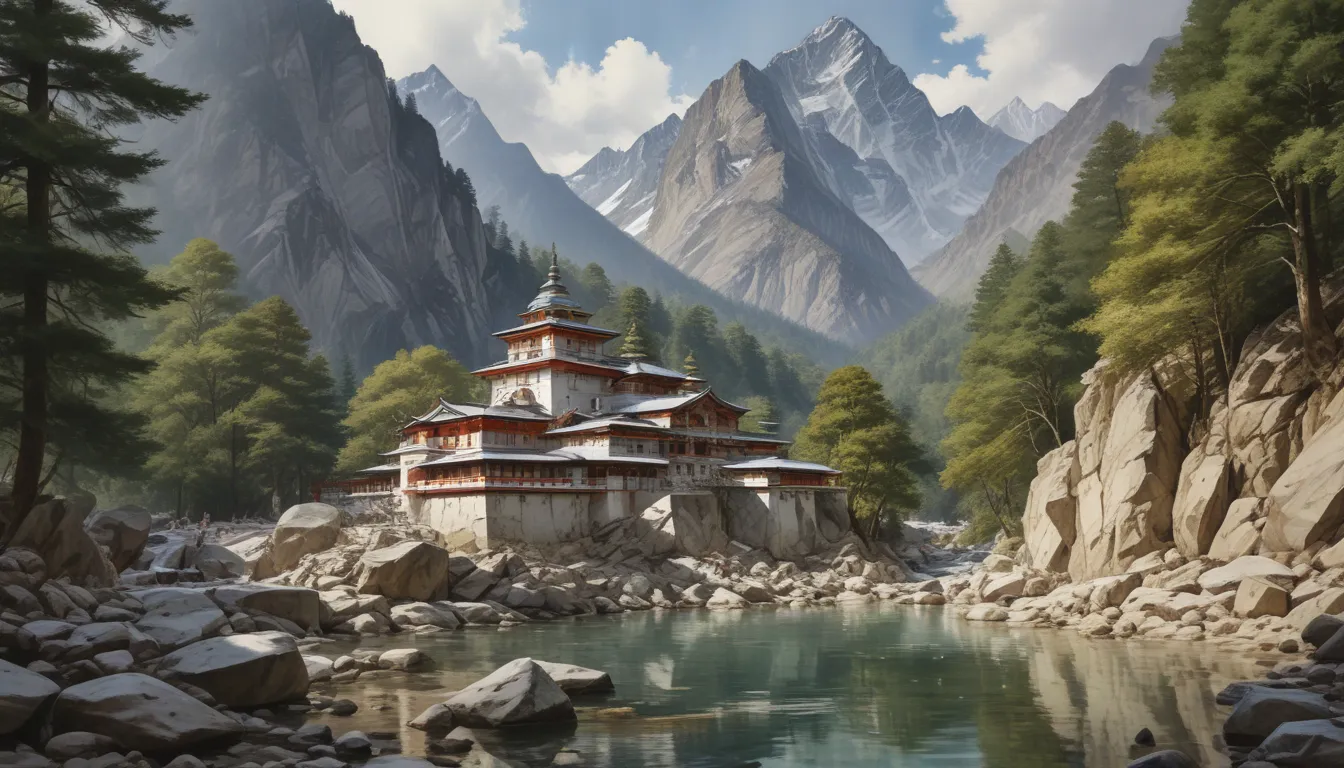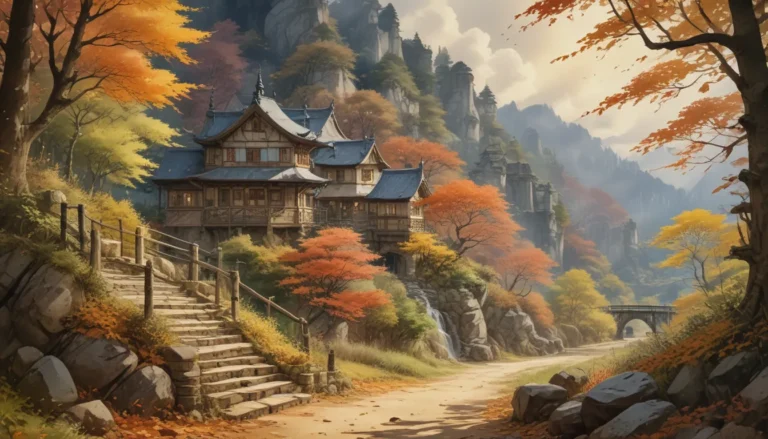The images in our articles are for illustrative purposes only and may not exactly match the content. They are intended to capture your interest and complement the text, not to replace it.
Are you ready to embark on a spiritual journey to one of the holiest sites in India? Gangotri Temple, nestled in the enchanting state of Uttarakhand, beckons with its ancient allure and divine tranquility. Dedicated to Goddess Ganga, the embodiment of the sacred River Ganges, this temple is a sanctuary of reverence and cultural significance.
Unveiling the Mystique of Gangotri Temple
Let’s unravel the mystique of Gangotri Temple with 13 astonishing facts that shed light on its historical, cultural, and religious significance. From architectural marvels to ancient scriptures, each detail adds a layer of depth to your understanding and appreciation of this sacred pilgrimage site.
Sacred Abode of Goddess Ganga
Situated in the Uttarkashi district of Uttarakhand, Gangotri Temple is the revered abode of Goddess Ganga. This sacred site is part of the Char Dhams, the four pilgrimage destinations held in high esteem in Hinduism.
Origin of the Holy River Ganga
Legend has it that Gangotri is the source of the holy River Ganga, where Goddess Ganga descended from heaven to purify mankind and offer salvation. The temple stands near the Bhagirathi River, the primary stream of the Ganges.
Architectural Splendor
Dating back to the 18th century, Gangotri Temple is a masterpiece of architectural brilliance. Adorned with intricate carvings and ornate decorations, the temple epitomizes traditional Himalayan temple architecture.
Enchanting Altitude and Location
Perched at an elevation of 3,048 meters (10,000 feet) above sea level, Gangotri Temple is ensconced amidst the majestic Himalayas. Surrounded by snow-capped peaks and cascading streams, the temple offers awe-inspiring vistas of nature’s splendor.
Openings and Closings
The gates of Gangotri Temple swing open on the auspicious day of Akshaya Tritiya in late April or early May, welcoming pilgrims until the festival of Diwali in October or November. The temple remains closed during the winter months due to heavy snowfall.
Mysterious Shivlinga
Inside the sanctum sanctorum of Gangotri Temple lies a natural rock Shivlinga submerged in water. According to folklore, this spot marks the divine moment when Lord Shiva captured the descent of River Ganga into his locks, averting catastrophe.
Trek to Gaumukh Glacier
Approximately 19 kilometers from Gangotri Temple lies the Gaumukh Glacier, the origin of the Bhagirathi River that transforms into the Ganges. This glacier, a popular trekking destination, lures spiritual seekers and adventure enthusiasts alike.
Tales from Ancient Scriptures
The scriptures of Hinduism, such as the Skanda Purana and the Mahabharata, mention Gangotri Temple in reverential tones. The epic saga of King Bhagirath’s penance to bring Goddess Ganga to Earth resonates through the hallowed halls of this temple.
Submerged Temple Remains
Parts of the original Gangotri Temple are believed to be submerged underwater due to natural calamities and river course alterations. These submerged remnants serve as poignant reminders of the temple’s enduring faith and history.
Celebratory Ganga Aarti
Gangotri Temple pulsates with religious fervor during grand Ganga Aarti ceremonies conducted by temple priests. Festivals like the Gangotri Festival and Makar Sankranti ignite spiritual zeal, drawing devotees from far and wide.
Trekking Trails and Adventure
Gangotri beckons adventurers with its challenging treks, including the Gaumukh Tapovan Trek and the Gangotri-Kedartal Trek. These trails offer a glimpse of the Himalayan grandeur, glaciers, and picturesque panoramas.
Spiritual Sanctity
For devout Hindus, a pilgrimage to Gangotri Temple symbolizes spiritual purification, divine blessings, and inner peace. The arduous journey to this sacred site is believed to cleanse sins and foster spiritual liberation.
Environmental Conservation
Efforts are underway to safeguard the sanctity and ecological balance around Gangotri Temple. Stringent regulations and sustainable tourism practices aim to preserve this sacred haven for future generations.
Conclusion: Embracing the Spiritual Legacy of Gangotri Temple
Gangotri Temple stands as a beacon of spirituality, resilience, and devotion amidst the Himalayan splendor. Whether you seek solace in religious grace or wish to explore nature’s wonders, this temple promises a transformative journey through India’s rich tapestry of culture and heritage.
Your Journey Begins Now
Plan your pilgrimage to Gangotri Temple and immerse yourself in its divine aura and majestic surroundings. Let the mystical charm of this sacred site captivate your senses and elevate your spirit on a transcendent odyssey through time and faith.
FAQs: Your Guide to Gangotri Temple
- What makes Gangotri Temple significant?
Gangotri Temple is revered as the birthplace of the sacred Ganges River and holds immense religious importance for Hindus. Dedicated to Goddess Ganga, it is part of the Char Dham pilgrimage circuit.
- How can I reach Gangotri Temple?
Located in the Uttarkashi district of Uttarakhand, Gangotri Temple is accessible via Jolly Grant Airport in Dehradun and Rishikesh railway station. From there, taxis and buses ply to the temple.
- When is the best time to visit Gangotri Temple?
The ideal time to visit Gangotri Temple is from May to June and September to October when the weather is pleasant. Monsoon season should be avoided due to heavy rainfall and landslides.
- What accommodation options are available near Gangotri Temple?
There are various lodging choices near Gangotri Temple, ranging from budget accommodations to guesthouses. It is advisable to book in advance, especially during peak pilgrimage seasons.
- Are there other attractions near Gangotri Temple?
Yes, Gaumukh Glacier, Tapovan, and Nelong Valley are neighboring attractions that offer mesmerizing views of the Himalayas. These sites are popular among adventure enthusiasts and nature lovers.
As you delve into the enchanting narrative of Gangotri Temple, remember that each step you take is a pilgrimage of the soul, resonating with the echoes of centuries past and the whispers of divine grace. Explore, embrace, and cherish the spiritual legacy of this sacred sanctuary amidst the grandeur of the Himalayas.






